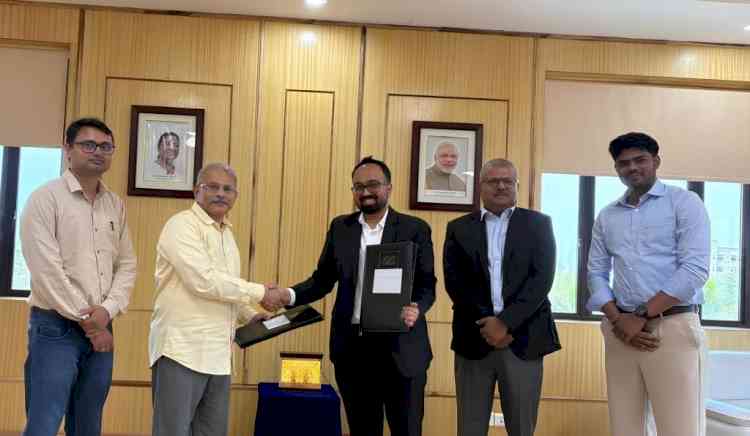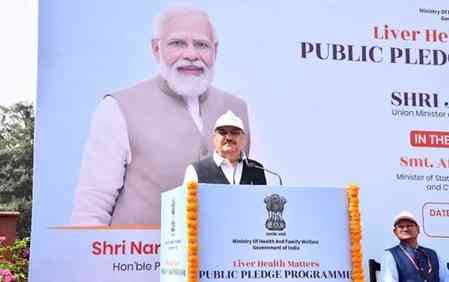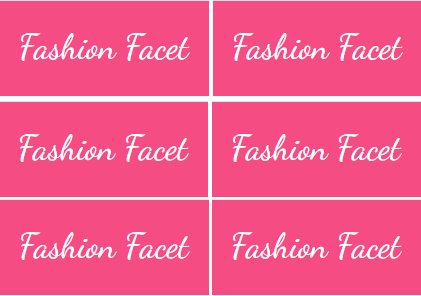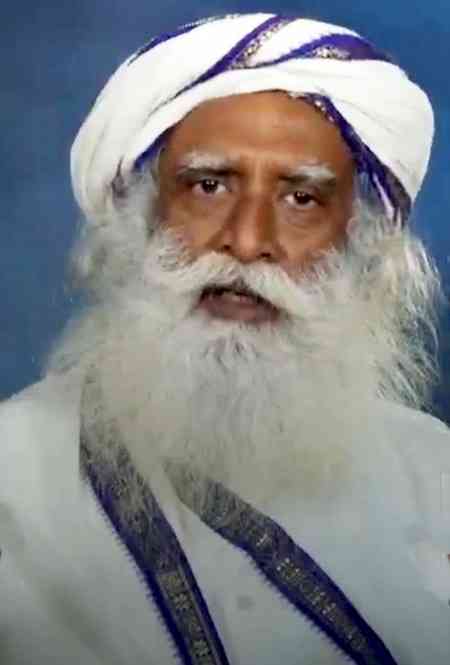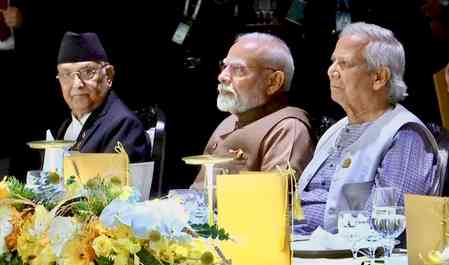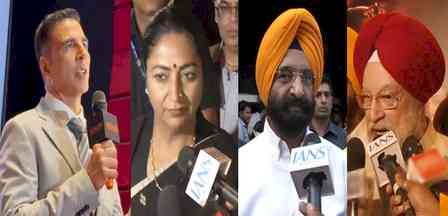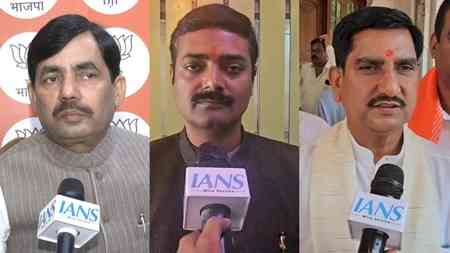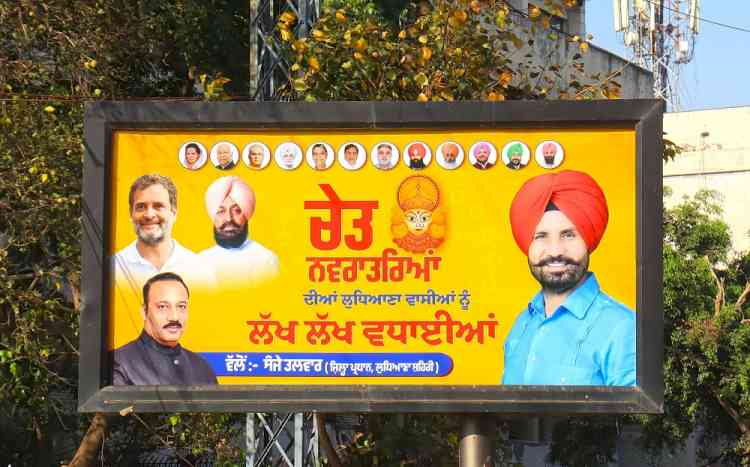Fusion of traditional craftsmanship, technology: ChatGPT-Studio Ghibli debate raises key questions
The land of the rising sun, Japan, which is quite prone to seismic activities, has triggered another one on the social media landscape. In the past few days, legendary filmmaker Hayao Miyazaki’s iconic Studio Ghibli art style has been used by netizens through artificial intelligence (AI) tool ChatGPT to create their own pictures.

Akshay Acharya
Mumbai, March 31 (IANS) The land of the rising sun, Japan, which is quite prone to seismic activities, has triggered another one on the social media landscape. In the past few days, legendary filmmaker Hayao Miyazaki’s iconic Studio Ghibli art style has been used by netizens through artificial intelligence (AI) tool ChatGPT to create their own pictures.
This has sparked conversations on violation of copyright laws by AI, with Internet users arguing over subjects like theft of art, and how it would rob the artists of means of survival, and deem them useless over a period of time.
First, how can artificial intelligence give the Ghibli style output, and bypass the intellectual property rights? Turns out, Japan’s laws have allowed software developers to train models on copyright-protected materials.
To start with, it's not the first time that something of this sort is happening. When automation happened in the industries in the 1960, and swept away vast swaths of jobs in America, the same fear filled in the masses. The jobs prevalent in the era were gone but still humans flourished, a lot of technology that emerged in the mainstream in the 1980s and 1990s was shaped by the automation in the workforce that happened a few decades ago.
In India, this happened in West Bengal when the ruling government of Communist Party of India (Marxist) scrapped computer programs over fears of computers taking away the jobs of the ‘workers’ of the world.
The world, however, didn’t stop, computers have become the centrepiece of our civilisation as they went mainstream in the late 1990s with even middle-class families using personal computers to enrich the learning experience of their children.
And then, the system came up with new jobs which required enhanced skills in the 2010s. The job or profile of a Social Media Manager was not heard of until the early 2000s.
The sketch artists didn't sit down and crib over not being able to use a paintbrush to mix the colours, they upskilled, and became better at what they did through 'digital' art, the same (science + art) tool not just allowed a faster and precise output in terms of the filling of colours, the borders of a sketch or the frame ratio of landscape or a portraiture, but also allowed then to store their creations on cloud and save them from physical damage.
We also didn't complain when the Internet gave us a massive reach, helped us connect with strangers across the world through our work in art at the cusp of the digital revolution. Digital art has an overwhelming rate of shareability vis-a-vis a hand drawn painting.
Clearly, now a hand drawn painting is not appealing to the masses because the masses do not have the bandwidth or a taste for finer things in life. That's the reason you didn't get to see the hand drawn posters of your favourite Bollywood films after the 2000s.
The digital art and retouching technology has helped movies reach a greater audience during the marketing leg of films. Standees, posters, flyers, billboards (creative and interactive billboards included), that little digital album cover on your Spotify or the banner ads on different applications are all shining examples of how science comes to art's rescue.
And that’s the point of evolution, you can’t pick and choose what you would take into the next evolutionary stage, the system or nature decides that. We don’t even get to keep the original form and shape of our bodies when evolution happens, that’s the reason humans don’t walk, act or talk like their primate cousins despite sharing close to 99% of genetic material yet we have a nictitating membrane, a peculiar feature of the reptiles from whom the mammals evolved.
Another point of contention is the differential treatment given to artists and scientists with many on social media claiming that the people in tech workforce, science, and medicine have the luxury of their work getting patented while artists don’t enjoy such privilege. Again an entirely untrue claim as artists do have copyright laws pertaining to their intellectual property by their side.
The Ghibli 'style' or any other style is out of the ambit of copyright in the same way mathematical formulae and theories are not bound by the patents or don’t entail monetary benefits, and still play a massive role in the modern tech.
Had that not been the case then Albert Einstein’s estate would be paid royalty for every new invention or discovery wired to his theory of relativity. Christopher Nolan, an artist or a storyteller by profession, would have been made to pay a lion’s share of the earnings of ‘Interstellar’ to Einstein’s estate or Sir Isaac Newton since the film heavily banks on their earlier works on time dilation and gravity.
What many people tend to overlook is the fact that art and science are quite similar, and need each other despite being two different worlds in themselves. A copyright claim, similar to a patent, can be made for a finished, a turnkey product or an art commodity, and not on an abstract idea or a style of art.
If it was not for the acute understanding of hydrocarbons, the sketch art wouldn’t have been the same today, the dyes won’t colour our fabrics in fashion design, the oil paintings would never have been made. The colour grades allowing different depths and colour temperature in paintings wouldn’t have existed if chemical engineers didn’t work on enhancing the light reflection properties of a grain of colour.
Then there are machines and technology created by humans that are no less than an artistic expression, a V16 engine is as much a work of art as a piece of literature is. It’s just that we don’t bother opening the hood, and look what’s inside.
Steam technology from the first industrial revolution inspired steampunk art, the third industrial revolution triggered a wave of cyberpunk art - the subgenres of ‘science’ fiction. The artists observed the technology created by engineers and scientists to a style of art. These styles of art are largely derived from real life designs.
Does that mean that steampunk or dieselpunk artists are bound to pay the engineers because they used their tech and its frills to give birth to their artistic style? Absolutely not, it’s a free world, and a touch of freedom or the aspiration of freedom is essential to create meaningful art.
Also, the discomfort arises from a very limited understanding of art. Human beings are not the end but the means to achieve the end to an art. Bioluminescence, Chemiluminescence, birds making their nests with intricate designs, the flora that has inspired artists for centuries be it the use of floral patterns in Mughal architecture or in textile art in the modern era, the vibrant display of aquatic ecosystems are all a part of nature and are out of the scope of human control.
The unexplored elements in the cosmos, the beautiful yet dangerous radiations that would annihilate the entire human race in the matter of a few microseconds, art is beyond humans, and is certainly not governed or controlled solely by us. It’s all a matter of perspective, and if you claim to intellectualise the conversation around art, the least expected from you is to be rational and open to other perspectives.
Whenever a novel concept takes birth, the market forces check if it’s being liked by a wide audience for enhanced usability and consumption. Once that is done, the novel entity is commodified, and put into mass production followed by the establishment of the supply chain.
The social media argument on ChatGPT and Ghibli style art has now spilled over to the mainstream media with opinion pieces across the spectrum of opposition and in favour for the Ghibli AI art. Ironically, there are media houses using images generated by Chatgpt in Ghibli style art for their stories calling out Chatgpt for stealing the said art style.
Within a span of a week, the majority went from cheering for Grok over its access and use of referenced source materials, research papers, judicial verdicts, and media reports to pulling down ChatGPT. It perfectly highlights the bipolarity of human nature.
It all begs the question, if the fear of being robbed off emerges from your own insecurities as an artist or the lack of will to work on your art.
The world is undergoing an upgrade. Are you willing to change the functional codes of your thought-process or are you willing to be a redundant bug in the next version? Perhaps, it’s something that should be with you for self-reflection.
As a parting gift, what you should be really concerned about is if the Ghibli trend has been unleashed by the market forces to mine and collect facial recognition data using artificial intelligence.


 IANS
IANS 

